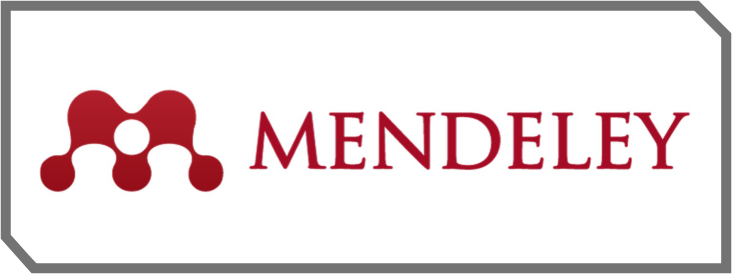Digital Fatigue: Assessing Burnout In The Virtual Offices Era (Sandwich Generation Viewpoint)
DOI:
https://doi.org/10.56696/ijamer.v1i2.15Keywords:
Sandwich Gen, Burnout, Virtual OfficeAbstract
The perspective of the majority of individuals reflects the view that working from home is actually more tiring compared to the experience of working face-to-face. WFH workers are often faced with difficulties in managing and optimizing the use of their time, even though they are physically at home. This research aims to conduct an in-depth evaluation of the impacts that influence digital fatigue experienced by workers in the virtual office era, especially those with Sandwich Generation status. Quantitative methods with the SEM-PLS approach were used with a census sample of 582 respondents. The findings indicate that the digital fatigue experienced by the Sandwich Generation is not influenced by work pressure. This research makes a contribution by placing a focus on sandwich generation workers. This creates novelty because it brings a specific dimension of the sandwich generation into the virtual office context.
References
Abrar, M., & Sidik, E. J. (2019). Analyzing ethical considerations and research methods in children research. Journal of Education and Learning (EduLearn), 13(2), 184–193. https://doi.org/10.11591/edulearn.v13i2.6516
Adhirajasa Reswara Sanjaya University, Kurniawati, F., Fikaris, M. F., Graduate School of Medical Sciences, University of Groningen, Netherlands, Eryani, I. S., Graduate School of Health Policy & Management, Erasmus University Rotterdam, Netherlands, Rohendi, A., Faculty of Management, Adhirajasa Reswara Sanjaya University, Indonesia, Wahyudi, B., & Faculty of Management, Adhirajasa Reswara Sanjaya University, Indonesia. (2023). The Effect Of Workload, Burnout, And Work Motivation On Nurse Performance. Jurnal Aplikasi Manajemen, 21(4). https://doi.org/10.21776/ub.jam.2023.021.04.05
Agrawal, A., Chopra, R., Sharma, G. D., Rao, A., Vasa, L., & Budhwar, P. (2023). Work from home practices as corporate strategy- an integrative review. Heliyon, 9(9), e19894. https://doi.org/10.1016/j.heliyon.2023.e19894
Alburez‐Gutierrez, D., Mason, C., & Zagheni, E. (2021). The “Sandwich Generation” Revisited: Global Demographic Drivers of Care Time Demands. Population and Development Review, 47(4), 997–1023. https://doi.org/10.1111/padr.12436
Baptista, M. N., Hauck-Filho, N., & Cardoso, H. F. (2022). The overlap between burnout and depression through a different lens: A multi-method study. Journal of Affective Disorders Reports, 10, 100437. https://doi.org/10.1016/j.jadr.2022.100437
Baumgartner, T. J., Sanborn, K., Reta, M., Lenards, N., Hunzeker, A., & Zeiler, S. (2023). Perceptions of burnout in medical dosimetry within a postpandemic work environment. Medical Dosimetry, 48(2), 77–81. https://doi.org/10.1016/j.meddos.2023.01.002
Caputo, A., Kargina, M., & Pellegrini, M. M. (2023). Conflict in virtual teams: A bibliometric analysis, systematic review, and research agenda. International Journal of Conflict Management, 34(1), 1–31. https://doi.org/10.1108/IJCMA-07-2021-0117
Dávila Morán, R. C. (2023). Influence of Remote Work on the Work Stress of Workers in the Context of the COVID-19 Pandemic: A Systematic Review. Sustainability, 15(16), 12489. https://doi.org/10.3390/su151612489
Dong, J. (2023). Research on information security protection technology of university office system. In K. Zhang (Ed.), International Conference on Mathematics, Modeling, and Computer Science (MMCS2022) (p. 38). SPIE. https://doi.org/10.1117/12.2670301
Einola, K., & Alvesson, M. (2021). Behind the Numbers: Questioning Questionnaires. Journal of Management Inquiry, 30(1), 102–114. https://doi.org/10.1177/1056492620938139
Fisher, J. (2022). Workplace Burnout Survey. Deloitte. https://www2.deloitte.com/us/en/pages/about-deloitte/articles/burnout-survey.html
Hair, J., & Alamer, A. (2022). Partial Least Squares Structural Equation Modeling (PLS-SEM) in second language and education research: Guidelines using an applied example. Research Methods in Applied Linguistics, 1(3), 100027. https://doi.org/10.1016/j.rmal.2022.100027
Hair, J. F. (Ed.). (2014). A primer on partial least squares structural equations modeling (PLS-SEM). SAGE.
Hayes, S. W., Priestley, J. L., Moore, B. A., & Ray, H. E. (2021). Perceived Stress, Work-Related Burnout, and Working From Home Before and During COVID-19: An Examination of Workers in the United States. SAGE Open, 11(4), 215824402110581. https://doi.org/10.1177/21582440211058193
Latini, A., Di Giuseppe, E., & D’Orazio, M. (2023). Immersive virtual vs real office environments: A validation study for productivity, comfort and behavioural research. Building and Environment, 230, 109996. https://doi.org/10.1016/j.buildenv.2023.109996
MacDonald, A. L. (2020). Of science and statistics: The scientific basis of the census1. Statistical Journal of the IAOS, 36(1), 17–34. https://doi.org/10.3233/SJI-190596
Magno, F., Cassia, F., & Ringle, C. M. (2022). A brief review of partial least squares structural equation modeling (PLS-SEM) use in quality management studies. The TQM Journal. https://doi.org/10.1108/TQM-06-2022-0197
Mahmoudzadeh, P., Afacan, Y., & Adi, M. N. (2021). Analyzing occupants’ control over lighting systems in office settings using immersive virtual environments. Building and Environment, 196, 107823. https://doi.org/10.1016/j.buildenv.2021.107823
Maran, T. K., Liegl, S., Davila, A., Moder, S., Kraus, S., & Mahto, R. V. (2022). Who fits into the digital workplace? Mapping digital self-efficacy and agility onto psychological traits. Technological Forecasting and Social Change, 175, 121352. https://doi.org/10.1016/j.techfore.2021.121352
Obschonka, M., Pavez, I., Kautonen, T., Kibler, E., Salmela-Aro, K., & Wincent, J. (2023). Job burnout and work engagement in entrepreneurs: How the psychological utility of entrepreneurship drives healthy engagement. Journal of Business Venturing, 38(2), 106272. https://doi.org/10.1016/j.jbusvent.2022.106272
Owsiany, M. T., Fenstermacher, E. A., & Edelstein, B. A. (2023). Burnout and Depression Among Sandwich Generation Caregivers: A Brief Report. The International Journal of Aging and Human Development, 97(4), 425–434. https://doi.org/10.1177/00914150231183137
Patanjali, S., & Bhatta, N. M. K. (2022). Work from Home During the Pandemic: The Impact of Organizational Factors on the Productivity of Employees in the IT Industry. Vision: The Journal of Business Perspective, 097226292210741. https://doi.org/10.1177/09722629221074137
Paul, W. (2023). Penerapan Hybrid Leadership Dalam Meningkatkan Semangat Kerja Dan Kualitas Kehidupan Kerja (Quality Of Work Life) Dalam Perspektif Syariah. Jurnal Ekonomi Syariah Indonesia (JESI), 2(1), 75–89. https://doi.org/10.57171/jesi.v2i1.76
Rathnaweera, D., & Jayathilaka, R. (2021). In employees’ favour or not?—The impact of virtual office platform on the work-life balances. PLOS ONE, 16(11), e0260220. https://doi.org/10.1371/journal.pone.0260220
Romansky, R., & Noninska, I. (2020). Business virtual system in the context of e‐governance: Investigation of secure access to information resources. Journal of Public Affairs, 20(3), e2072. https://doi.org/10.1002/pa.2072
Stich, J.-F. (2020). A review of workplace stress in the virtual office. Intelligent Buildings International, 12(3), 208–220. https://doi.org/10.1080/17508975.2020.1759023
Sudarji, S., Panggabean, H., & Marta, R. F. (2022). Challenges of the Sandwich Generation: Stress and coping strategy of the multigenerational care. Indigenous: Jurnal Ilmiah Psikologi, 7(3), 263–275. https://doi.org/10.23917/indigenous.v7i3.19433
Ugwu, A. J. (2020). Impact of Virtual Office on Business Environment. International Journal of Business and Management Review, 8(2), 76–84. https://doi.org/10.37745/ijbmr.vol8.no2.p76-84.2020
Weiss, D., Weiss, M., Rudolph, C. W., & Zacher, H. (2022). Tough times at the top: Occupational status predicts changes in job satisfaction in times of crisis. Journal of Vocational Behavior, 139, 103804. https://doi.org/10.1016/j.jvb.2022.103804
Wells, J., Scheibein, F., Pais, L., Rebelo Dos Santos, N., Dalluege, C.-A., Czakert, J. P., & Berger, R. (2023). A Systematic Review of the Impact of Remote Working Referenced to the Concept of Work–Life Flow on Physical and Psychological Health. Workplace Health & Safety, 71(11), 507–521. https://doi.org/10.1177/21650799231176397
Yin, J., Yuan, J., Arfaei, N., Catalano, P. J., Allen, J. G., & Spengler, J. D. (2020). Effects of biophilic indoor environment on stress and anxiety recovery: A between-subjects experiment in virtual reality. Environment International, 136, 105427. https://doi.org/10.1016/j.envint.2019.1
Downloads
Published
How to Cite
Issue
Section
License
Copyright (c) 2024 International Journal Of Accounting, Management, And Economics Research

This work is licensed under a Creative Commons Attribution-NonCommercial-ShareAlike 4.0 International License.









